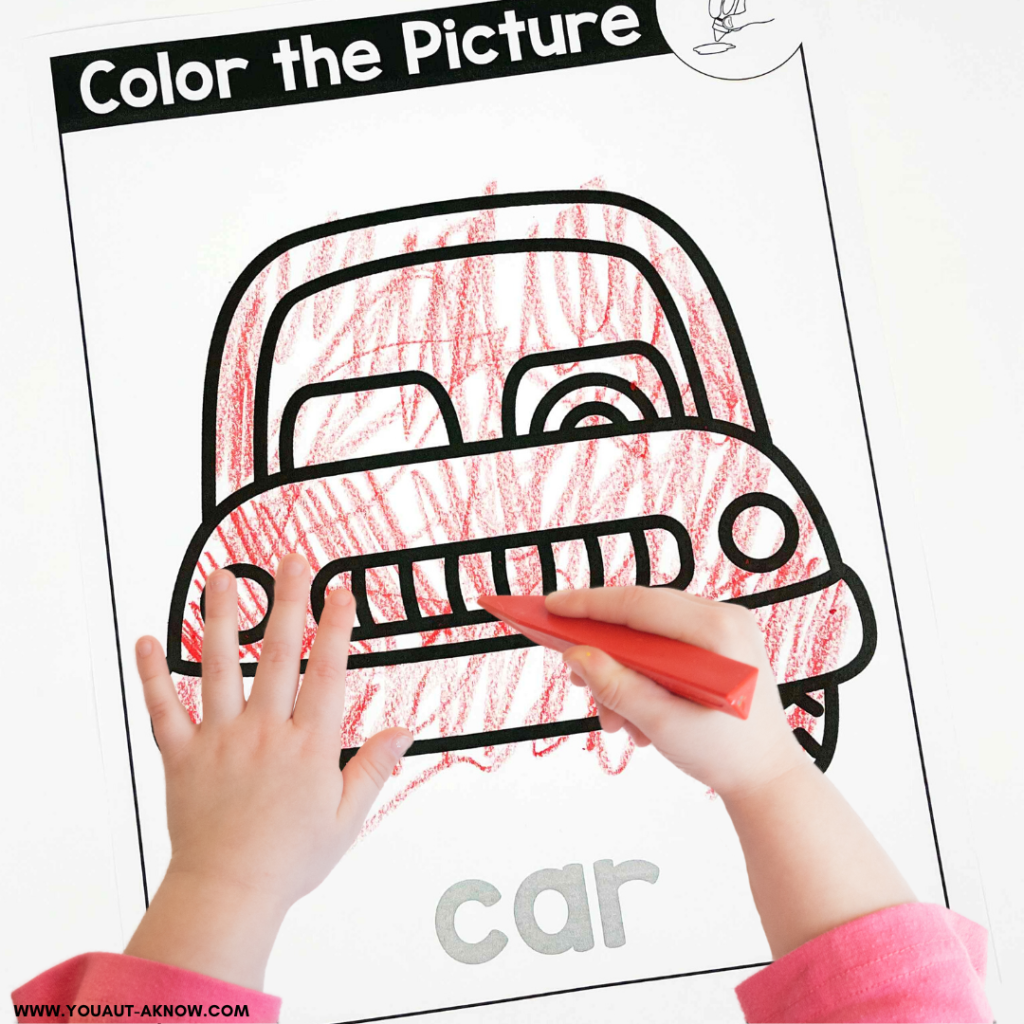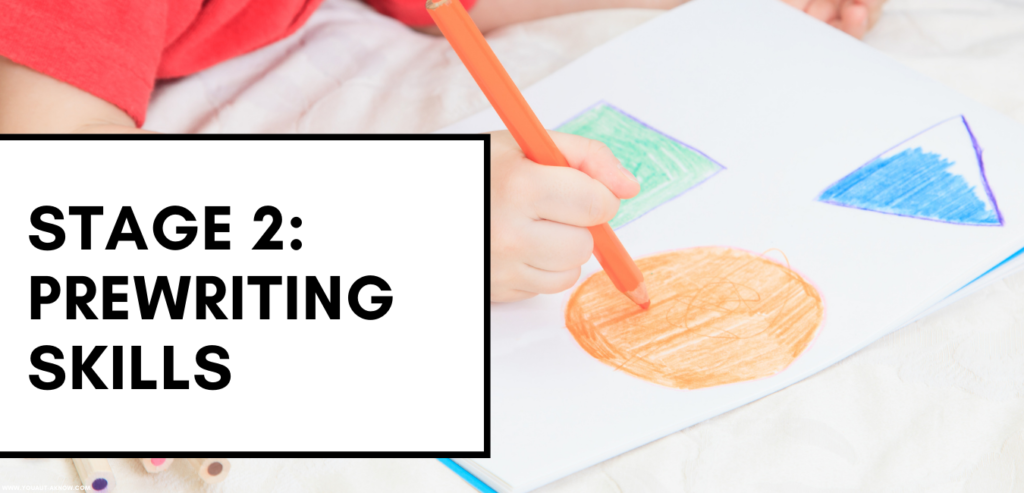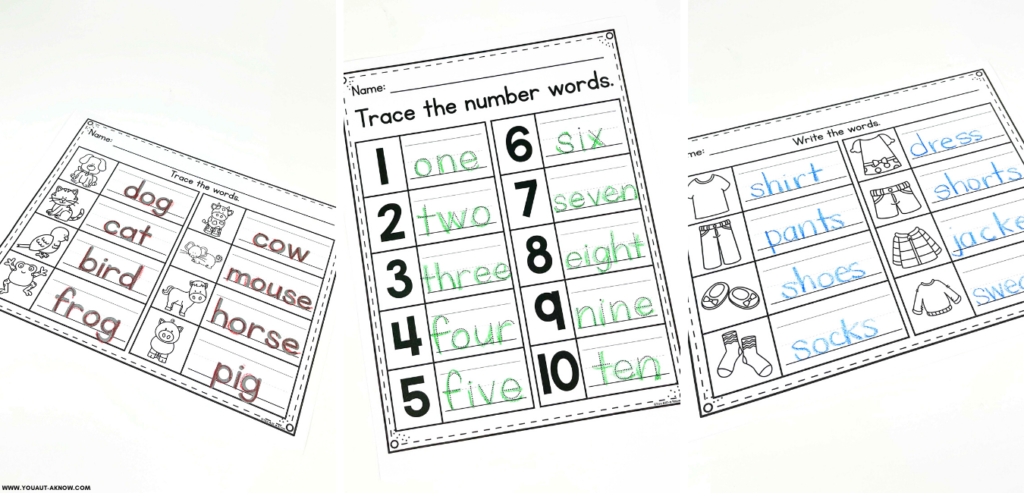
Building writing skills can be tough in the Special Education classroom. We do a lot of work to build fine motor skills in our classroom, but I haven’t shared a lot about how I work with students to develop and work through the different stages of beginning writing. When I’m working with my students I always meet them where they’re at. If they’re not able to grasp a writing utensil we work on grasp and other fine motor activities, but once we have that down, it’s time to dive into the stages of beginning writing.
If you’ve been working in Special Education for any amount of time, you know it’s going to vary between students how quickly they progress through these stages. But knowing all four stages of beginning writing skills helps me determine which activities to use in the classroom. I’m going to give you a quick peek at the four stages of beginning writing in this post as well as some activities you may want to use in your classroom.

Stage 1: Scribbling & Coloring
Once we’ve got a solid grasp, I move my student into scribbling and coloring activities. The idea here is that I want my students getting their writing utensil on the paper. I want them to start making strokes and start to realize that they can use their non-dominant hand to stabilize their paper. The goal here is to have fun, build confidence, and start to refine strokes. This is where they start to go from scribbling all over the page to coloring within lines of objects.

I love using coloring pages for this activity. We can use our favorite characters or even some simple coloring pages I made that focus on the receptive vocabulary we have been practicing in class.

Stage 2: Prewriting Skills
After we’re scribbling on our paper, it’s time to start building prewriting skills. When we’re building prewriting skills in our classroom, we’re working on drawing lines and shapes. This is where we start to build more control over the strokes we’re making with our writing utensils. Students start to make more intentional strokes and can draw more complex shapes.
I usually start with straight lines, then progress to wavy or “mountain” lines. After that, I move onto shapes like circles and squares. Once students are making the corners in squares and triangles they’re usually ready to move onto the next stage!


Stage 3: Writing Letters
After our students have shown understanding of prewriting skills, I dive into writing letters. I like to start with capital letters because there are more straight lines and less curves to deal with. Another thing I do to start making writing meaningful is to teach student to write the letters in their name. That way they can start writing and spelling their own names and connect meaning to their writing.


Stage 4: Writing Words
Once my students are writing letters, we dive into writing words. This really helps students see that writing has meaning. I often use words that students can read to get started or begin attaching written words to pictures that students can recognize. Labeling pictures is a great way for students to understand that writing conveys language to the reader. When we start writing words, I provide some visual prompts with outlined and dotted letters and eventually fade to independent writing.

After we’re understanding how to write words, the world of writing really opens up for students. This is where we can start to dive into sentences and paragraphs and so much more! If you’re looking to build confident writers in your classroom it’s really important to make sure you work through the basic stages of beginning writing. I always find it amazing to watch students go from prewriting skills to independent writers.





